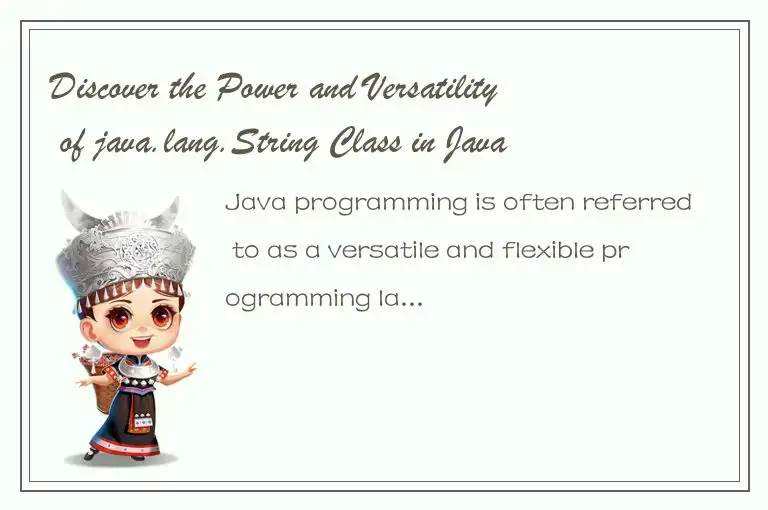Java programming is often referred to as a versatile and flexible programming language. The main reason for this is, of course, the language’s inherent features and capabilities. One of these features is the java.lang.String class.

In Java programming, the java.lang.String class is the backbone of the language’s string handling capabilities. It is a fundamental class that provides many operations and methods to manipulate strings in Java. In this article, we will explore the features, abilities, and versatility of java.lang.String Class in Java programming.
String Basics
In Java, a string is a sequence of characters that are enclosed in double quotes. The String class is defined in the java.lang package, and it is a final, immutable class, which means that once a String object is created, its value cannot be changed. Instead, any modification to the string results in the creation of a new string.
String Type Declaration
To declare a string variable in Java, you can use the following syntax:
```
String str = “Hello, World!”;
```
Here, the variable str stores the value “Hello, World!”. The equals sign (=) is used to assign a value to the variable. The double quotes (“”) indicate that the value is a string, and the semicolon (;) is used to terminate the statement.
String Concatenation
In Java, string concatenation means adding two or more strings together. This operation is carried out using the + operator. For instance:
```
String firstName = “Peter”;
String lastName = “Parker”;
String fullName = firstName + ” “ + lastName;
```
The result of the above concatenation is: “Peter Parker”.
String Length
The String class has a built-in method, length(), which determines the length of the string. The syntax to use this method is:
```
String str = “Hello, World!”;
int length = str.length();
```
Here, the value of length is 13.
String Comparison
In Java, you can compare two strings using the equals() method. The syntax is:
```
String str1 = “Hello”;
String str2 = “Hello”;
boolean result = str1.equals(str2);
```
Here, the value of result is true because both str1 and str2 contain the same value.
String Conversion
Sometimes, you may need to convert a non-string object into a string value. Java provides several options for this conversion, but one of the most common methods is to use the toString() method of an object. For example:
```
Integer x = 10;
String str = x.toString();
```
The value of str is “10”.
String Indexing
Each character in a string has a unique index position. In Java, the index positions start at 0 and end at the length of the string minus 1. To access a character at a specific index, you can use the charAt() method. For example:
```
String str = “Hello”;
char ch = str.charAt(2);
```
The value of ch is ‘l’.
String Substring
Java provides the substring() method to extract a portion of a string. This method takes two parameters: the first parameter is the starting index from where the string will be extracted, and the second parameter is the index position up to which the string will be extracted. For example:
```
String str = “Hello, World!”;
String subStr = str.substring(2, 7);
```
The value of subStr is “llo, ”.
String Manipulation
Java’s String class also provides many other methods that enable string manipulation. Some of these methods are:
- toUpperCase(): converts a string to uppercase.
- toLowerCase(): converts a string to lowercase.
- replace(): replaces one or more characters in the string with another character or group of characters.
- trim(): removes whitespaces from both ends of a string.
Conclusion
Java’s String class is a powerful and versatile class that is essential for string manipulation in the language. Whether it is concatenation, comparison, conversion, or manipulation of strings, the String class offers many methods that developers can use according to their needs. By mastering the features and abilities of the java.lang.String class, developers can write efficient and effective programs in Java programming.




 QQ客服专员
QQ客服专员 电话客服专员
电话客服专员